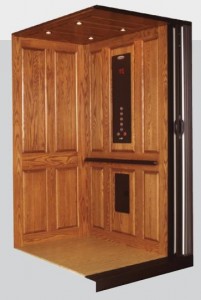 If you or a loved one are enjoying the retired life here in Central NY, you're probably traveling, playing sports, having fun with your family...and doing what you can to live at home as long as possible.
If you or a loved one are enjoying the retired life here in Central NY, you're probably traveling, playing sports, having fun with your family...and doing what you can to live at home as long as possible.
One of the ways the golden years are made easier is with the installation of a home elevator, eliminating stairs for those who find it difficult to move up to the second story.
The ultimate benefit is that installation of a residential elevator is an upgrade that allows people to stay in their homes and not have to move.
You Can Avoid Surprises and Stress When Placing Your Home Elevator
The thing is, a small home elevator properly installed is more than a cosmetic upgrade. A client of mine recently asked me to look over the plans the elevator company had come up with for him.
Lucky I did.
Their first thought was to locate the elevator in the hallway. So the salesman came up with a plan for the elevator and installation with costs. Now, the elevator salesman knows his elevators and he offered a terrific product. But he wasn't a contractor who'd know the extent of the renovation necessary for the project.
At first, it seemed the hallway was the best location. But unbeknownst to my clients, trouble lurked and they almost got themselves into a bit of a situation.
How to Get the Most Out of the Installation of Your Home Elevator
Before they signed the contract with the vendor, my clients asked me about the plans. Smart move. I took a look and saw that the proposed elevator layout included a significant loss of valuable storage space from the closet in the hall.
But the Devil is in the Details
After careful analysis of the existing residence, the proposed elevator configuration also revealed that the elevator shaft was too wide for the hallway. It turns out that a part of it would have to go into the kitchen. That meant tearing out cupboards and reconfiguring the kitchen.
The cost of all of this wasn't included in the original installation estimate.
But all ended well...turns out, my clients were contemplating the renovation of the kitchen anyway, so I suggested placing the elevator in the kitchen and not the hallway. By incorporating the new elevator into the plans for the renovated kitchen, we saved thousands of dollars on both. And, in addition, we wouldn't lose any closet space.
The best part was, my clients aren't stressing about an unexpected kitchen renovation brought on by the installation of their home elevator. By planning both together and in advance of the contractor showing up on site, we limited costly surprises that would more than likely have cropped up.
I often tell clients that it is easier (and more effective) to make changes on paper as opposed to when the contractor is in the middle of tearing out walls or pouring foundation. Here's the thing, if you remember that your living space is a reflection of your lifestyle, any change to one element of a home should be considered in light of plans for future upgrades.
Give me a call anytime or click here to get in touch. I'll answer your questions or offer a "second opinion" to make sure you'll experience smooth sailing with your next project.
Until next time,
Dan Berkhoudt, Architect




Leave a Comment